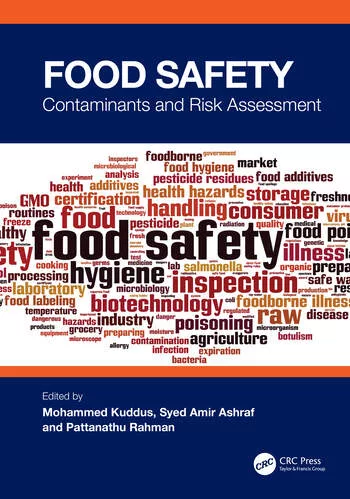Reducing the Risk of Arsenic in Rice

Image credit: wirestock via Freepik
New research suggests that the most effective treatments for reducing levels of arsenic in rice are cultivar selection, irrigation management, cooking approach, and the application of selenium or silicon soil amendments.
The study, which appears in the journal Environmental Geochemistry and Health, was supported by the Institute for the Advancement of Food and Nutrition Sciences (IAFNS) Food & Chemical Safety Committee and focuses on mitigating arsenic uptake in rice, which often grows in flooded fields.
A focus on arsenic is important as high levels of arsenic exposure can cause acute symptoms like vomiting, diarrhea, and nerve damage. And long-term exposure to low levels of arsenic can lead to skin problems, increased cancer risk (particularly skin, bladder, and lung cancer), and cardiovascular disease.
Rice is typically grown under flooded conditions that support anaerobic microbial metabolism that promotes generally small amounts of plant uptake of arsenic. Some amount of this arsenic ends up consumed by humans, and in some populations and diets, rice is one of the largest sources of inorganic arsenic intake.
To identify arsenic mitigation opportunities, the researchers conducted a literature search using an extensive database spanning from 2008 through 2024. The review covered 120 studies in 14 countries and included 44 field studies, 68 potted plant studies, and eight studies on postharvest practices.
Rice uptake of arsenic can be limited by selecting varieties that accumulate less arsenic in the grain. However, the difference in arsenic accumulation between subspecies can impact yields, as high-yield varieties typically have higher total arsenic accumulation than lower-yielding varieties.
Of all the mitigation methods surveyed, alternative water management techniques are perhaps the most effective in limiting arsenic concentrations in rice. These irrigation management strategies include sprinkler irrigation, alternate wetting and drying, furrow irrigation, aerobic cultivation, and rainfed irrigation. However, there may be barriers to implementing alternate wetting and drying irrigation in place of flooding due to several reasons, including (but not limited to) a lack of control of irrigation water due to the pump and canal distribution networks at some farms.
Looking for quick answers on food safety topics?
Try Ask FSM, our new smart AI search tool.
Ask FSM →
Despite differences in soil type, climate, and type of irrigation method applied, every study in the review found that irrigation methods with dry periods lowered total grain arsenic anywhere from 10 percent to 98 percent in rice when compared to continuous flooding.
However, one drawback of employing irrigation methods with dry periods is the likelihood of higher concentrations of cadmium—another toxic heavy metal—in some soils because that metal is most bioavailable under dry conditions.
Soil Amendments
Additives intended to improve the soil (soil amendments) containing silicon compounds have been demonstrated to lower arsenic uptake in plants. Most of the studies reviewed found that silicon amendments decreased grain total arsenic by an estimated 7 percent to 78 percent at various levels of application.
Studies in this review that measured grain arsenic also found that application of the metal selenium as an amendment lowered grain total arsenic by an estimated 7 percent to 100 percent depending on factors such as arsenic level in the soil and application amount. Higher rates of application were generally more effective, but overdoses of selenium can be toxic to the plant, and runoff from fields can pollute the environment.
The majority of reviewed studies found that sulfur amendments lowered total arsenic by 27 percent to 72 percent in rice, though not under all management conditions.
Combining different soil amendments can be effective, as well. Studies show that combinations of amendments were able to lower grain total arsenic by up to 61 percent while also lowering grain cadmium by up to 93 percent.
Postharvest Techniques
Parboiling, or partially cooking and drying the rice in the husk, is known to reduce arsenic in the grain. On an industrial scale, it requires more energy and labor than milling raw rice. Alternatively, rinsing, soaking, and modifications in cooking require minor amounts of water and energy and are viable methods of reducing arsenic for home cooks. For example, cooking methods that involve briefly parboiling rice before cooking and discarding the parboiling water lowered levels of arsenic by up to 83 percent.
The article also addresses data needs and the high cost of testing crops for arsenic. According to the authors, “Investment in accurate, high-throughput testing would also enable farmers who grow low-arsenic rice to contract with mills to provide low-arsenic rice and rice products intended for sensitive populations.” The researchers add: “Our recommendation is to create regional, public-sector laboratories… for high-throughput arsenic speciation analysis that could facilitate creating a pipeline for low-arsenic rice streams.”
The paper is available here.
In a related story, Food Safety Magazine recently reported on high levels of arsenic and cadmium in store-bought rice potentially posing health threats to infants. That story can be found here.









